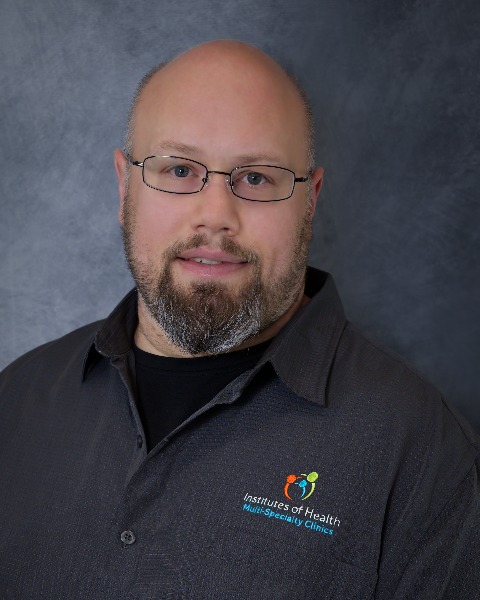Back
Posters
Poster Judging Hour
Reducing Anxiety in a Population of First Responders with Post-Traumatic Stress Disorder
Friday, March 14, 2025
6:00 PM – 7:00 PM US Eastern Time

Gabriel M. Dawson, DC (he/him/his)
Senior VP, Systems, Analytics & Compliance
Institutes of Health
Brentwood, New Hampshire, United States
Abstract
Introduction
First responders face trauma at work, which may lead to anxiety and post-traumatic stress disorder (PTSD). An occupational medicine program using a transdisciplinary biopsychosocial treatment approach aims to reduce anxiety in first responders with both anxiety and PTSD. This analysis examines how the intensity of patient participation in the program relates to the likelihood of anxiety resolving, as measured by the clinician-administered Hamilton Anxiety Rating Scale (HAM-A).
Methods
The analysis utilized data pertaining to first responders employed by the City of San Diego who initiated care between May 1, 2022, and July 30, 2024, who had clinically significant anxiety (HAM-A>13) and PTSD (PCL-5≥33) and completed at least one hour with the program. The change in patients’ HAM-A scores pre- versus post-treatment was evaluated using a t-test. A logistic regression was conducted, with the outcome being whether the patient had clinically significant anxiety at the end of treatment. Log-transformed (base 2) hours of program exposure served as the independent variable. The patient’s HAM-A score at treatment initiation, gender, age, and occupation (firefighter vs. police) served as control variables.
Results
The analysis included 55 patients. HAM-A scores significantly (p <.001) decreased following treatment, from a mean of 25.6 (s.d.: 4.5) to a mean of 10.2 (s.d.: 6.6). Program hours were significantly (p=0.003) and negatively associated with the likelihood that a patient had clinically significant anxiety at completion. When patients doubled their program hours, they had under half the odds of having clinically significant anxiety at completion (o.r.: 0.46; 95% c.i.: 0.28-0.77). None of the other variables included in the analysis had a statistically significant association with anxiety outcomes.
Conclusion
Increased exposure to transdisciplinary biopsychosocial treatment was significantly associated with a reduced likelihood of clinically significant anxiety in a population of first responders with a history of anxiety and PTSD.
Introduction
First responders face trauma at work, which may lead to anxiety and post-traumatic stress disorder (PTSD). An occupational medicine program using a transdisciplinary biopsychosocial treatment approach aims to reduce anxiety in first responders with both anxiety and PTSD. This analysis examines how the intensity of patient participation in the program relates to the likelihood of anxiety resolving, as measured by the clinician-administered Hamilton Anxiety Rating Scale (HAM-A).
Methods
The analysis utilized data pertaining to first responders employed by the City of San Diego who initiated care between May 1, 2022, and July 30, 2024, who had clinically significant anxiety (HAM-A>13) and PTSD (PCL-5≥33) and completed at least one hour with the program. The change in patients’ HAM-A scores pre- versus post-treatment was evaluated using a t-test. A logistic regression was conducted, with the outcome being whether the patient had clinically significant anxiety at the end of treatment. Log-transformed (base 2) hours of program exposure served as the independent variable. The patient’s HAM-A score at treatment initiation, gender, age, and occupation (firefighter vs. police) served as control variables.
Results
The analysis included 55 patients. HAM-A scores significantly (p <.001) decreased following treatment, from a mean of 25.6 (s.d.: 4.5) to a mean of 10.2 (s.d.: 6.6). Program hours were significantly (p=0.003) and negatively associated with the likelihood that a patient had clinically significant anxiety at completion. When patients doubled their program hours, they had under half the odds of having clinically significant anxiety at completion (o.r.: 0.46; 95% c.i.: 0.28-0.77). None of the other variables included in the analysis had a statistically significant association with anxiety outcomes.
Conclusion
Increased exposure to transdisciplinary biopsychosocial treatment was significantly associated with a reduced likelihood of clinically significant anxiety in a population of first responders with a history of anxiety and PTSD.

